
Xeriscape costs depend on materials, the size of your yard, and if you DIY. This guide will help you determine what your xeriscaping project will cost.
With so many varieties to choose from, there’s no need to hedge your bets


Seek help from a local landscaper to find the right privet hedge for your needs, as there are many different species available.
If you want maximum privacy and a classic look, pick an oval-leaved or glossy privet hedge.
Although some people might appreciate the appearance of the white flowers on the Chinese privet, a landscaper may advise against this plant due to its invasive nature.
For people who live in colder, northern climates, opt for a border or amur privet.
If you’ve ever browsed for hedges at a garden center, you’ve no doubt come across a privet. Part of the Ligustrum family, privets are one of the most popular hedge choices across the world. They have many advantages: Their tight growth patterns and green leaves look great, they’re incredibly hardy, and you can get creative with shaping them if you like. But with so many different types to choose from—each with unique characteristics—it can be difficult to figure out what will work best for your yard.
A professional landscaper near you can help you narrow down your options, and below, you can read about the pros and cons of 11 popular types of privet hedges.
| Type of Privet | Height When Mature |
|---|---|
| Oval-Leaved Privet | 10–15 ft. |
| Golden Privet | 8–10 ft. |
| Common Privet | 10–15 ft. |
| Japanese Privet | 6–12 ft. |
| Waxleaf Privet | Up to 10 ft. |
| Delavay Privet | Up to 10 ft. |
| Chinese Privet | Up to 15 ft. |
| Glossy Privet | 25–50 ft. |
| Border Privet | 4–15 ft. |
| Amur Privet | Up to 15 ft. |
| Sunshine Privet | Up to 4 ft. |

Believed to hail from Japan, this is one of the most popular types of privet in the world (it’s also sometimes called garden privet). It reaches a height of 10 to 15 feet when mature, making it a popular choice for privacy hedges and sculpting projects.
It has thick, rounded leaves and white flowers in summer. It survives well in plant hardiness zones 5 through 8, which means it grows well in most of the continental United States—even areas with chilly winters.
| Pros | Cons |
|---|---|
| Beautiful leaf shapes | May grow too fast |
| Offers privacy | Can be invasive |
| Very hardy |
Best For: Classic hedges and large topiaries
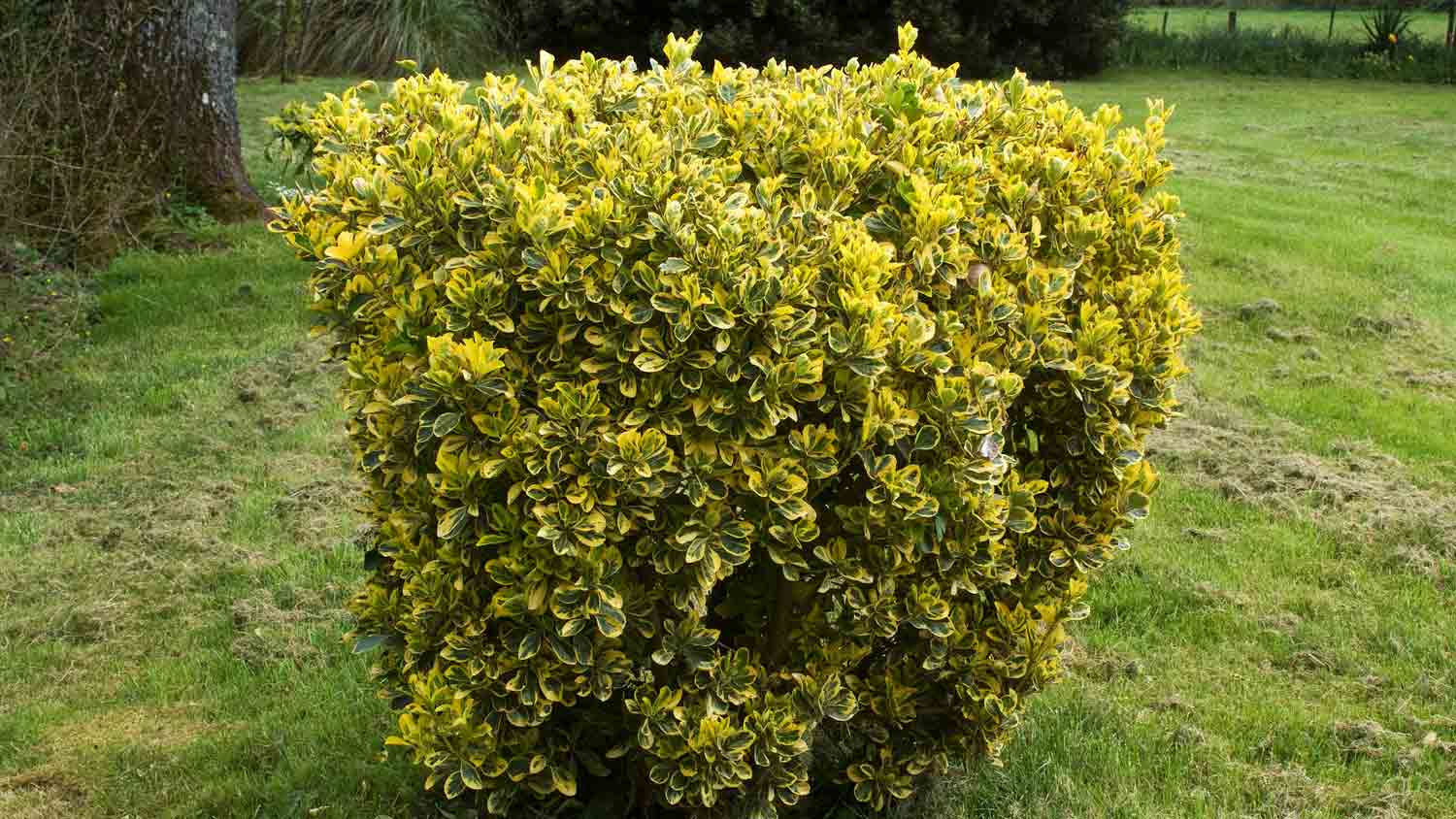
A cultivar of the oval-leaved privet (you’ll often see it labeled as “Aureum”), this plant boasts beautiful variegated leaves with streaks of yellow and green. It’s a very striking look, and golden privet also offers many of the advantages that oval-leaved privet does, including its ability to survive in a wide range of climate zones. However, golden privet is a little shorter at maturity, reaching 8 to 10 feet at the most, so it may not have as many applications for larger properties that need privacy.
| Pros | Cons |
|---|---|
| Variegated leaves | Not as tall |
| Durable |
Best For: Adding color and visual interest

This type of privet is closest to the original wild variety. As a result, it comes with some disadvantages that have been bred out of more cultivated species. It has sharper, more blade-like leaves that drop easily in the winter, and its summer flowering isn’t as impressive. On the plus side, it grows quickly (reaching a maximum of 10-15 feet) and can tolerate a wide range of soil conditions (except very wet soil). There is an “Atrovirens” cultivar of common privet that’s even hardier and keeps its leaves longer.
| Pros | Cons |
|---|---|
| Fast growth | Loses leaves easily |
| Very few soil needs | Can be invasive |
Best For: Low-maintenance gardens
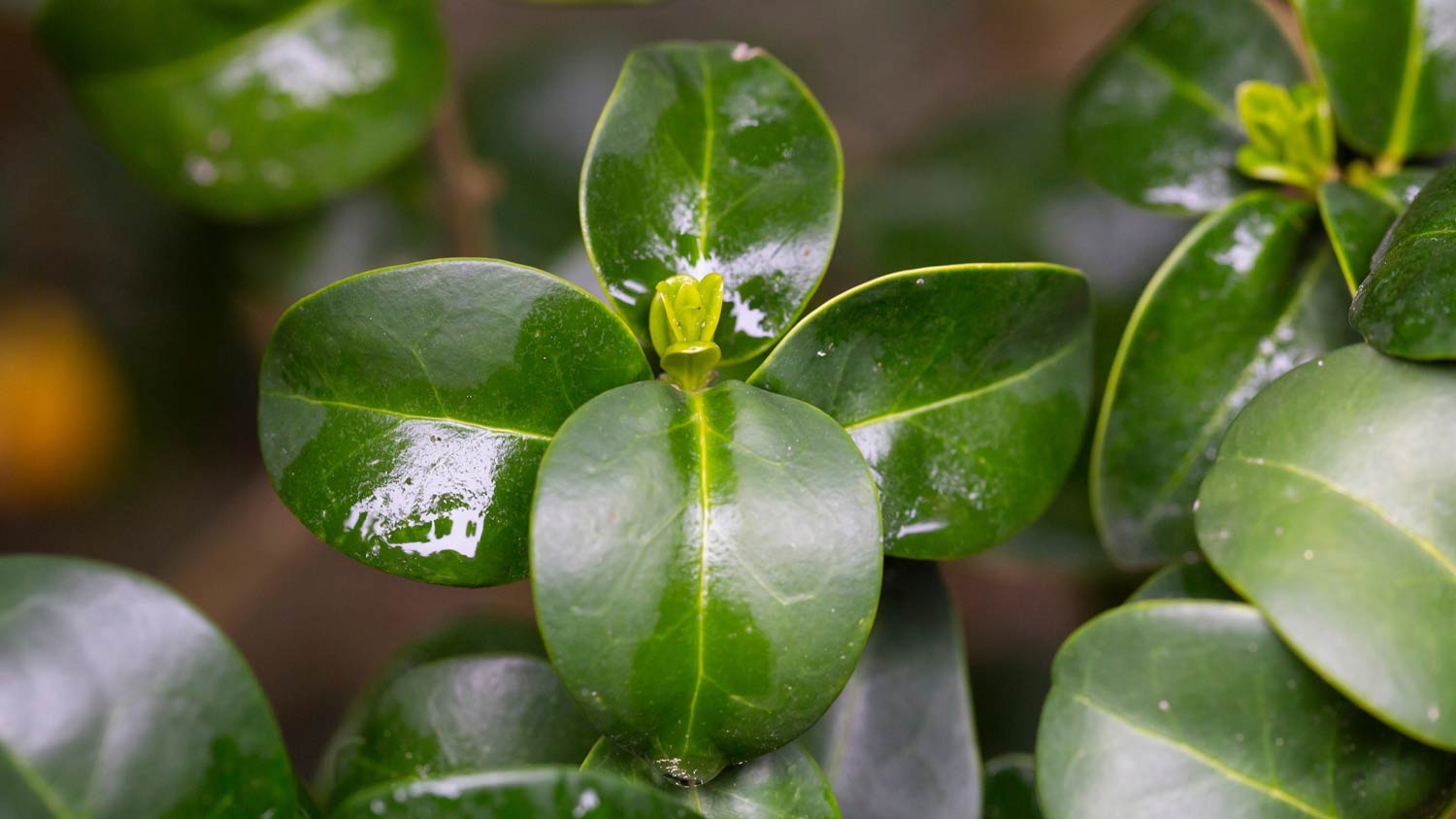
Japanese privet is known for its smaller, darker leaves and its somewhat shorter height (it tops out at 6 to 12 feet when mature). It’s also slightly more vulnerable to cold winters, but like all privets, it’s a relatively hardy plant.
There are several popular cultivars of Japanese privet. These include the darker, beautiful “Rotundifolium,” which is popular in Asian-style gardens, and the lighter “Recurvifolium,” also known as crinkle leaf privet. All in all, Japanese privet is one of the most versatile privets available.
| Pros | Cons |
|---|---|
| Versatile | Not as tall |
| Small, dark leaves | Not as cold-tolerant |
Best For: Asian-style gardens

A cultivar of the Japanese privet, this deserves its own category. Developed in Texas, it’s prized for its glossy, dark green, noticeably thick leaves and its easy-to-shape branches. This makes waxleaf privet very popular as a standalone bush or container shrub. However, it’s often shorter and more delicate than the original Japanese privet: Don’t try to grow this cultivar in climate zones below 7.
| Pros | Cons |
|---|---|
| Thick, glossy leaves | Not as tall |
| Easy to shape | Not cold-tolerant |
Best For: Container gardens
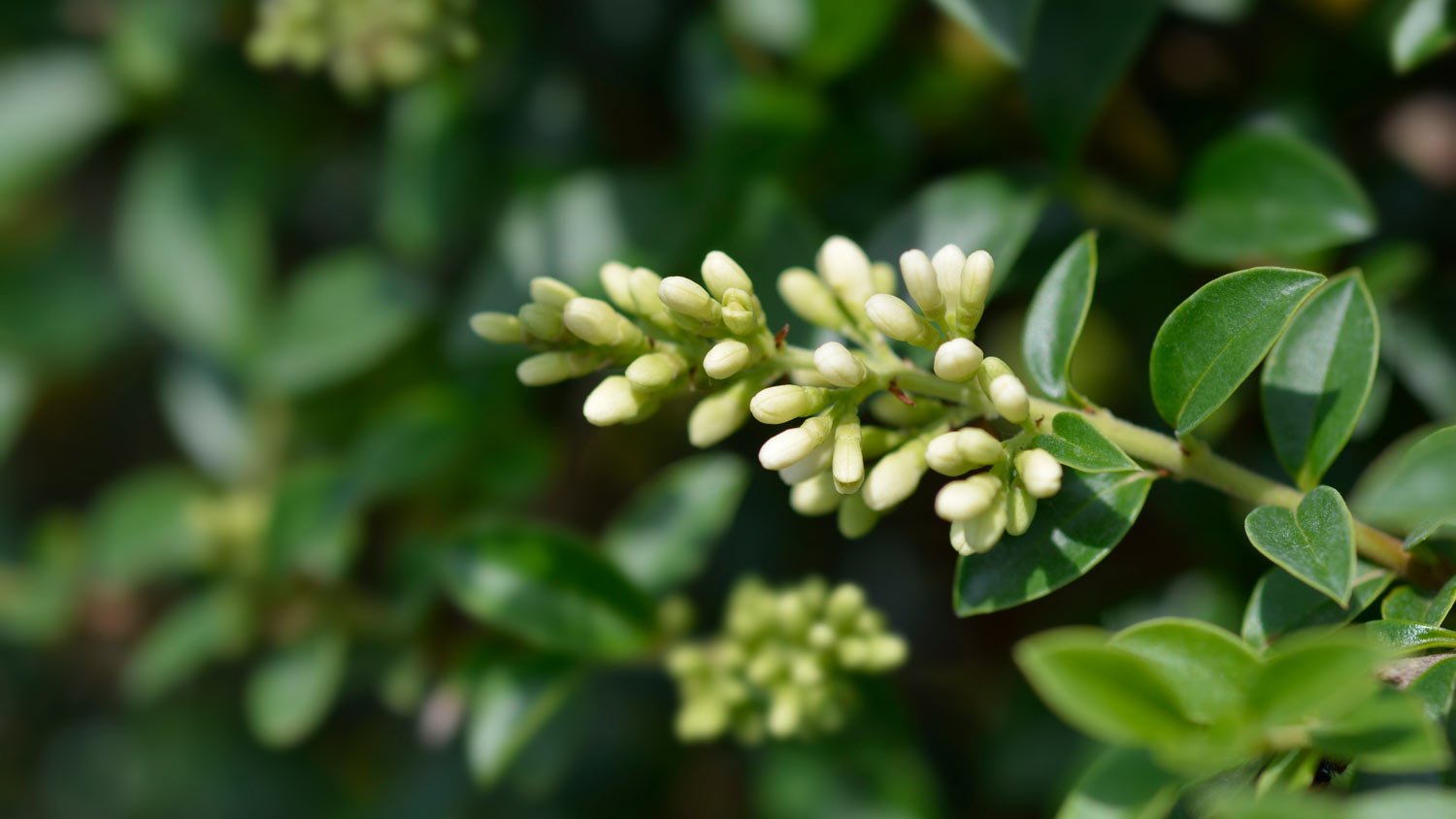
Many people assume that any privet can be pruned into a spherical shape. That’s true to an extent, but some varieties are easier to “ball”—and at the top of the list is the Delavay privet, which you’ll typically find in nurseries already sculpted into a ball. These privets can be beautiful, but they aren’t usually suitable for hedges.
| Pros | Cons |
|---|---|
| Easy to sculpt | Not best for hedges |
| Fragrant flowers |
Best For: Topiaries

Occasionally called the small-leaf privet, the Chinese privet has much in common with, well, the common privet. It’s fast-growing and can reach up to 15 feet in the right conditions.
Chinese privet is also one of the more infamous privets, because it’s highly invasive in the southern United States. It’s frequently the subject of warnings on what not to plant in warmer weather zones. Also, it has a reputation for having pungent, overly-sweet flowers. Some find the scent unpleasant and even describe it as fetid.
| Pros | Cons |
|---|---|
| Easy to grow | Highly invasive |
| Pungent flowers |
Best For: Colder climates and areas where it’s more easily contained
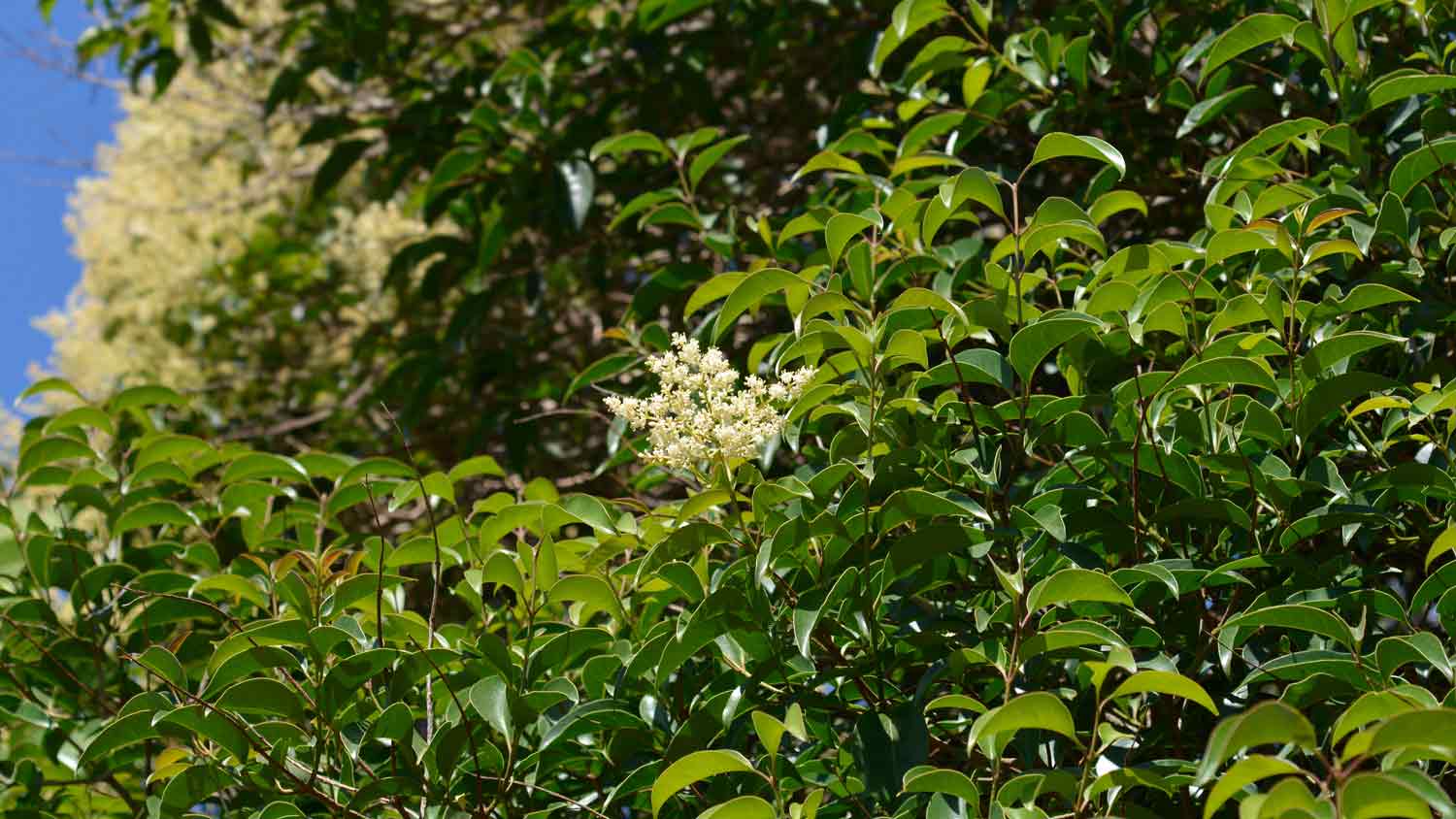
Glossy privets are often confused with both waxleaf privets and Chinese privets, and to make matters worse, you’ll often see their names used interchangeably. This is when scientific names come in handy. The waxleaf privet is Ligustrum japonicum, Chinese privet is Ligustrum sinense, and glossy privet is Ligustrum lucidum.
The biggest difference with glossy privet is its height: If trained as a tree, it can grow nearly 50 feet tall. You can also keep it lower as a tall privacy shrub. Compared to the waxleaf privet, glossy privet’s shiny leaves are typically larger. It can also be more vulnerable to colder temperatures.
| Pros | Cons |
|---|---|
| Very tall | Not as cold-tolerant |
| Large, shiny leaves | Often mislabeled |
Best For: Privacy

The average privet may have trouble growing in very cold climates, including some northern states and mountainous regions where temperature drop below zero in winter. But the border privet is an exception. It’s able to grow well in climate zone 3, making it suitable for even the coldest U.S. winters. Appearance-wise, it’s similar to—but slightly shorter than—the oval-leaved privet and has spikier-looking blooms in summer.
| Pros | Cons |
|---|---|
| Very cold-resistant | Not as tall |
| Glossy green leaves | Pungent flowers |
Best For: The coldest climates
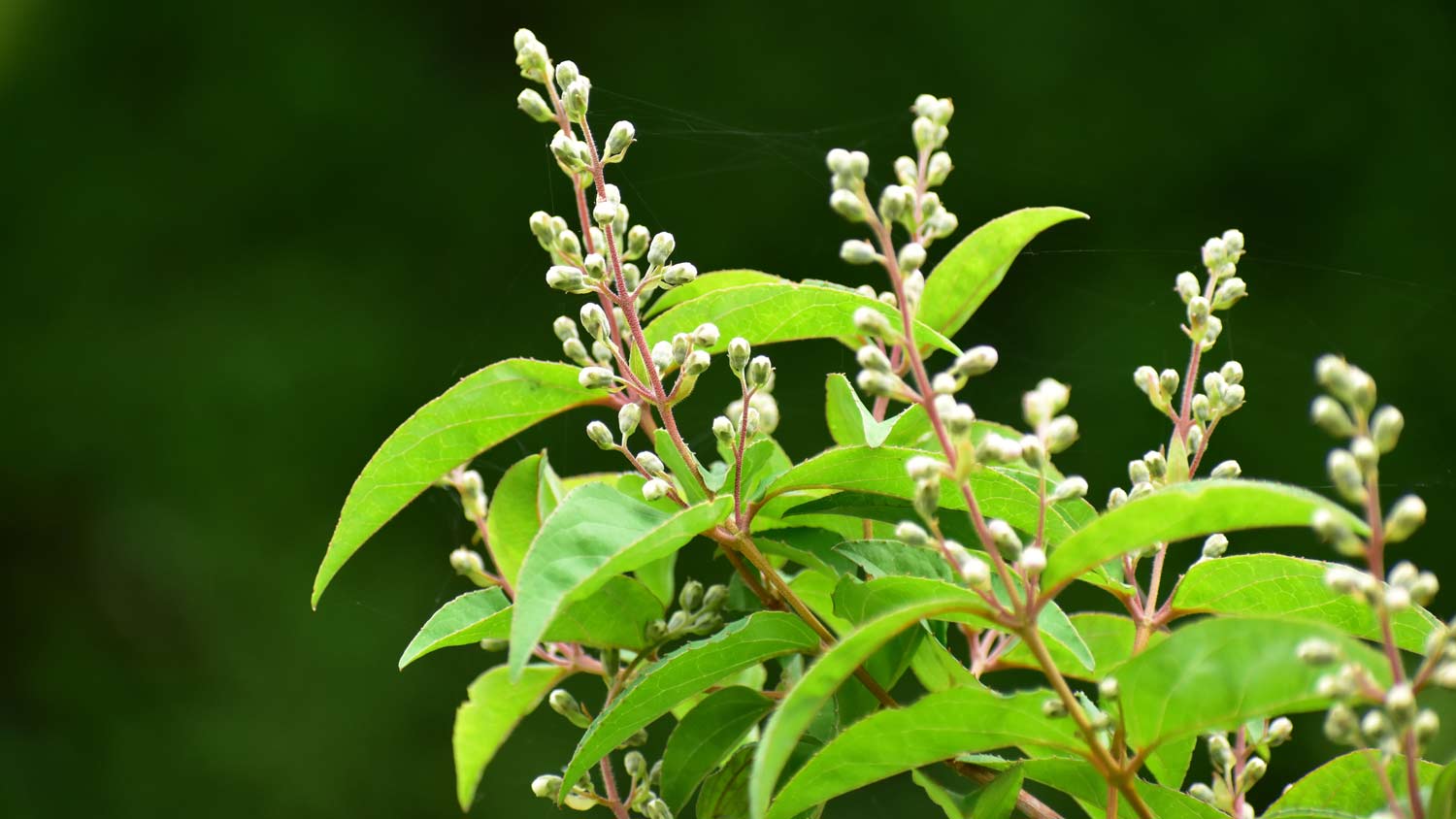
Native to northern China, the low-maintenance amur privet is easy to grow and tolerates cold well. It grows up to 15 feet, making it a good option for a privacy hedge. But its dull green leaves aren’t as attractive as other types of privet, and many people find the scent of its flowers to be unpleasant.
| Pros | Cons |
|---|---|
| Cold-resistant | Dull green leaves |
| Easy to grow | Pungent flowers |
| Good for privacy |
Best For: Windbreak hedges

This unique ornamental privet is instantly recognizable for its bright yellow leaves. However, its beautiful look comes with some downsides. It’s a very short privet, typically only three to four feet high at the most, so it can’t be used as a windbreak hedge or privacy hedge. It also does poorly in cold weather, making it a better choice for milder climate zones 6 and above.
| Pros | Cons |
|---|---|
| Bright yellow leaves | Shortest variety |
| Unique | Not cold-tolerant |
Best For: Ornamental shrubs
Wonderful personality, works hard, constant communication.
We went over what was to be done and he followed to the letter except where he found bunny nest. Good call! Cheerful, easy to work with
Bruce and Nate were exceptional!! They tiled our basement shower and it looks amazing!!! They made the design look outstanding - so visually pleasing. Bruce also guided us in what kind of grout would go well with the tile and pebble flooring we picked out - he's the expert! He also put in 3...
They were good will use them agian thank you.
From average costs to expert advice, get all the answers you need to get your job done.

Xeriscape costs depend on materials, the size of your yard, and if you DIY. This guide will help you determine what your xeriscaping project will cost.

Ivy might look pretty, but you probably don’t want it in your garden. Learn how much it’ll cost to remove ivy by type, treatment method, and more.

From your flower beds to your walkway, river rocks make a classic addition to your landscape. Learn about the cost to install river rock to set a proper budget.

Hiring a pro isn’t necessary when removing holly bushes. This guide can help you make quick work of the holly bush removal process.

St. Augustine grass generally fares well in warm climates, but brown spots happen. Here are some ways to revive seemingly dead St. Augustine grass.

What causes your lawn to have dips and bumps? We’ll answer this question and help you learn who to hire to fill an uneven lawn.